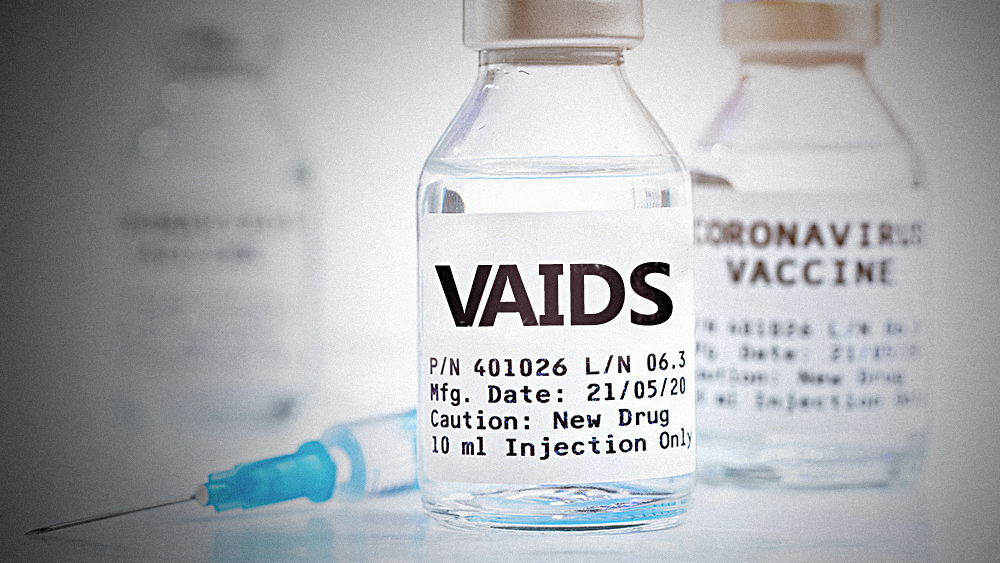Report: FOREVER CHEMICALS found in bandages used on wounds
04/25/2024 / By Olivia Cook

A new report has revealed that per- and polyfluoroaklyl substances (PFAS) – commonly known as “forever chemicals” – are also present in popular bandages used on wounds.
The bombshell report was made possible by consumer watchdog blog Mamavation, which partnered with Environmental Health News (EHN) for the endeavor. The two entities commissioned a laboratory certified by the Environmental Protection Agency to determine the levels of PFAS contamination in bandages.
EHN and Mamavation submitted 40 brands of popular wound bandages for testing. According to the lab’s findings, 26 of these 40 brands had detectable levels of PFAS ranging from 11 parts per million (ppm) to 328 ppm. Notably, 10 out of 16 bandages designed for black and brown skin tones indicated the presence of PFAS. (Related: Industry influence crippling lawmakers’ attempts to pass law protecting consumers from FOREVER CHEMICALS.)
The laboratory tested for detectable levels of organic fluorine, which is indicative of PFAS. But according to the Daily Mail, PFAS “are sometimes used to make adhesives” – including those use on wound bandages.
Forever chemicals are known for their ability to repel water, grease and other liquids – making them ideal for use in various consumer and industrial products. In the case of wound bandages, the adhesives containing PFAS help protect the broken skin from pathogens that can cause wound infection.
However, the use of PFAS in adhesives has raised concerns due to environmental concerns about these – including their persistence in the environment and their potential to bio-accumulate in organisms. There has also been an outcry on the potential health impacts associated with these chemicals.
PFAS have been linked to various health issues, including immune system suppression, developmental problems, cancers, and endocrine disruption. Studies have also shown that exposure to PFAS during pregnancy may lead to developmental issues in infants and children, including delayed growth and development.
Wound bandages, a common first aid item, may cause more problems down the line
“Because bandages are placed upon open wounds, it’s troubling to learn that they may also be exposing children and adults to PFAS, said Duke University‘s Linda Birnbaum, former director of the National Institute of Environmental Health Sciences. “It’s obvious from the data that PFAS are not needed in wound care, so the industry must remove their presence to protect the public from PFAS and opt instead for PFAS-free materials.”
Scott Belcher, an associate professor at North Carolina State University‘s Center for Environmental & Health Effects, also shared the same sentiments. He told Mamavation: “Fluoropolymers – such as polytetrafluoroethylene (PTFE) – are extremely common forms of PFAS that could be contributing to the organic fluorine found in bandages.”
The report underscored the necessity for the wound care industry to transition to PFAS-free materials to safeguard public health. As awareness of the health and environmental risks posed by PFAS has increased, there has been growing interest in developing PFAS-free alternatives for adhesive formulations.
While these forever chemicals have been used in some adhesive formulations in the past, efforts are underway to reduce or eliminate their use in favor of safer alternatives. Some companies have made the first step of eliminating of PFAS in their adhesive products, opting for safer alternatives that do not contain these potentially harmful chemicals. Brands like 3M and Tru Colour, offer PFAS-free alternatives, providing hope for consumers seeking safer options in wound care.
Chemicals.news has more stories about PFAS in consumer products.
Watch this video that warns about forever chemicals found in yoga pants.
This video is from the GalacticStorm channel on Brighteon.com.
More related stories:
Forever chemicals pose greater cancer risk to women than men, study finds.
Maine becomes first state to enact broad ban of toxic PFAS “forever chemicals.”
Ketchup, mayo and other common staple foods tainted with toxic PFAS chemicals.
Sources include:
Submit a correction >>
Tagged Under:
This article may contain statements that reflect the opinion of the author
RECENT NEWS & ARTICLES
BadMedicine.News is a fact-based public education website published by BadMedicine News Features, LLC.
All content copyright © 2019 by BadMedicine News Features, LLC.
Contact Us with Tips or Corrections
All trademarks, registered trademarks and servicemarks mentioned on this site are the property of their respective owners.



















